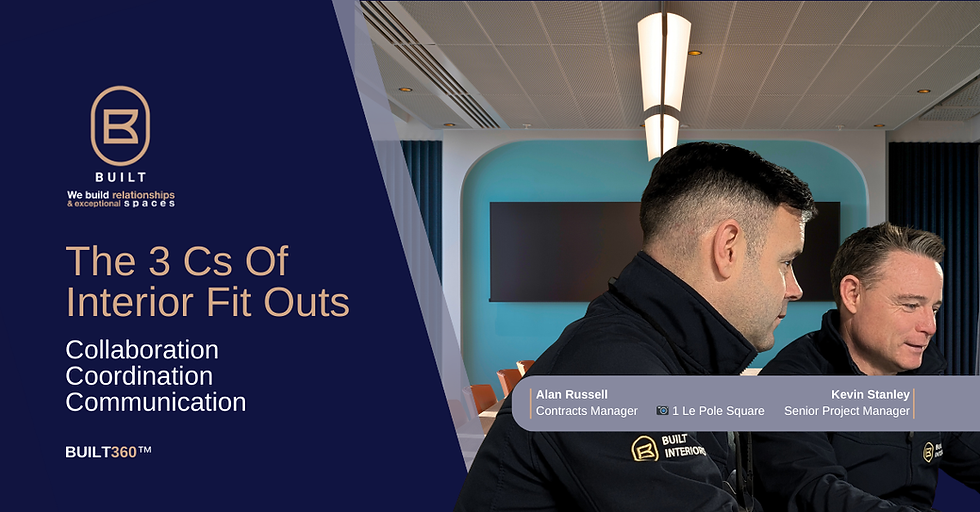Avoiding the Hazard of Working at Height
- declan191
- Sep 19, 2022
- 3 min read
Updated: Sep 28, 2022
Built Interiors explain the importance of pre-planning when it comes to working safely at heights.

Most of the team at Built Interiors, including Managing Director, Barry Keenan, started their careers on the tools, and have an in-depth understanding of the construction process from a range of different angles. Their intention with every project is to complete on time with zero health and safety incidents and no disruption to tenant’s businesses.
In fact, Barry has a personal passion for protecting others beyond the confines of occupational health and safety (OHS). He has spent 5 years as a crew member of the Lough Swilly RNLI (Royal National Lifeboat Institution), responding to emergencies at sea and on 24 hr call. Today he shares why Built Interiors prioritise pre-planning for working safely at heights.
Why height hazards?
The Health and Safety Authority (HSA) undertook a review of construction-related fatal accidents in Ireland between 1989 and 2016 and found that 40% of fatalities in the sector were as a result of falls from height. As a team that manages, monitors and coordinates health and safety on greenfield and brownfield sites the Built team knew they had to be proactive in their preventative measures and learn from the costly lessons of others.
Why prioritise pre-planning?
Barry and his team know that when all trades are clearly and comprehensively briefed on how to work safely at height, how to act and behave in the workplace, how to report an incident and what to do when something goes wrong, it reduces the risk of accidents and fatalities. Not only that but it also ensures should disaster strike, it will be dealt with as swiftly and as safely as possible.
“One of the most important tools in our arsenal is our ability to comprehensively prepare our risk assessments well in advance of the project kick-off and ensure we have a robust induction and training schedule in place. Every project is different, and we don’t rely on previous success to predict future fortunes.” says Barry.
Prior to stepping-on-site
The Built team have consistently expanded the scope of their safety inductions and in recent years have moved them online to ensure all staff, visitors and subcontractors have the ability to complete before they come to site. This induction also covers the usual safety topics such as confined spaces and hazards. Spending the time at the start to make this process as easy and smooth as possible reduces the time involved and the risks of anyone falling through the cracks.
Prior to feet-leaving-floor
The Built team carry out risk assessments with the aim of avoiding any person working at any height as often as is practical. This establishes the baseline goal as zero and any deviation from that is something “outside of the ideal”. The impact being that any time a worker’s feet leave the floor it is only after conducting a careful and thorough examination and ruling out all other options.
All work at height is properly planned and organised. The Built team evaluates and quantifies any potential harm relating to working at heights and takes every step needed to reduce its likelihood of occurring. This includes assessing, inspecting and maintaining all necessary equipment and PPE, adequately inspecting the area for any hazards prior to commencing and vitally ensuring that the individuals undertaking the task are competent and up to date on their OHS Training.
Prior to your project
There are no measures that can be taken which will entirely eliminate risks on a building site but as the old adage goes; those who fail to prepare better prepare to fail.
To ensure your project is in safe hands get in touch with the Built team today: https://www.builtinteriors.com/contact




Comments